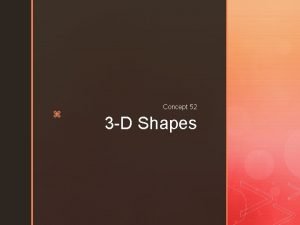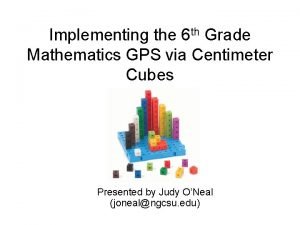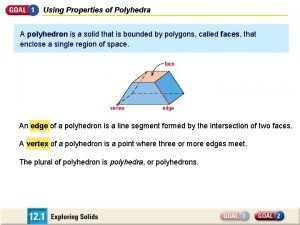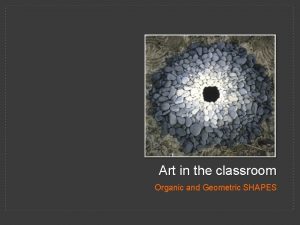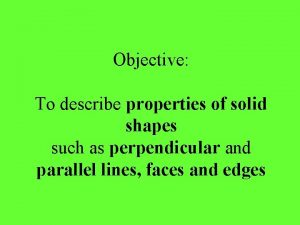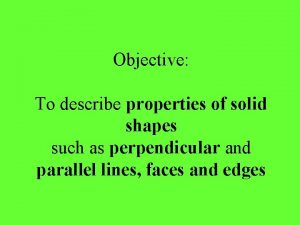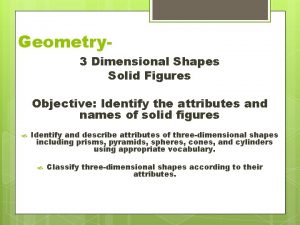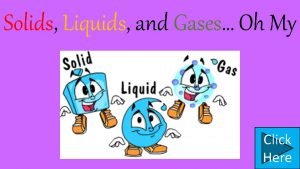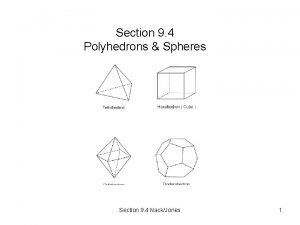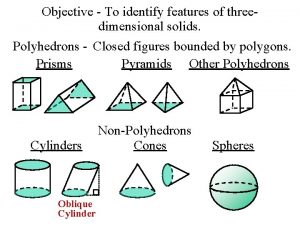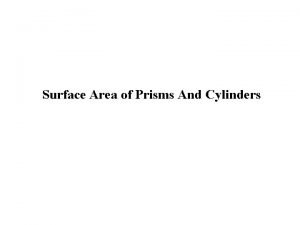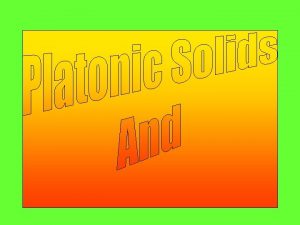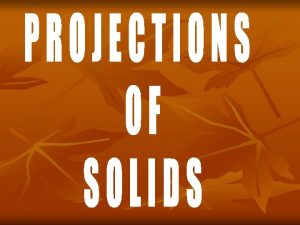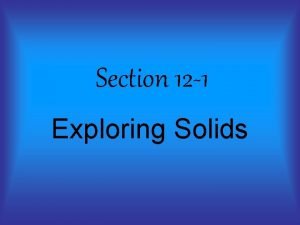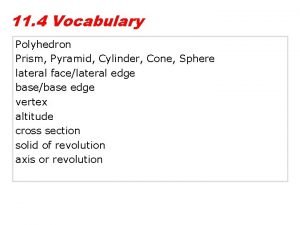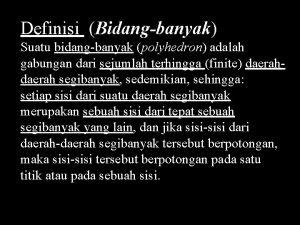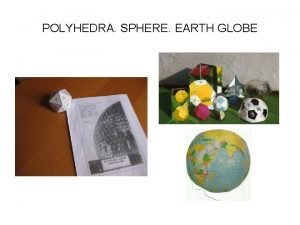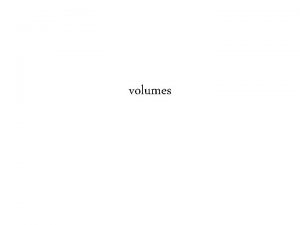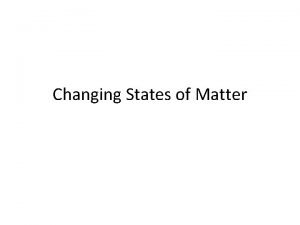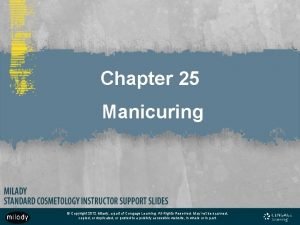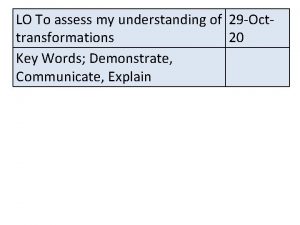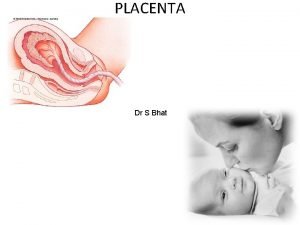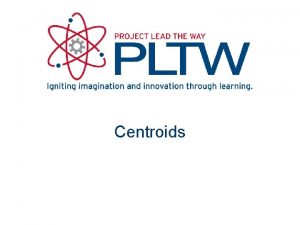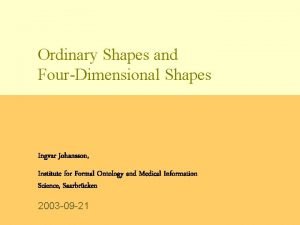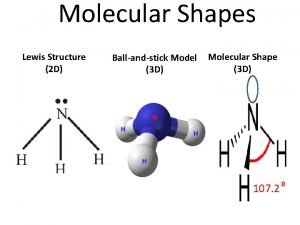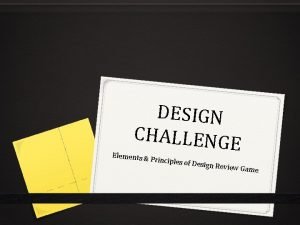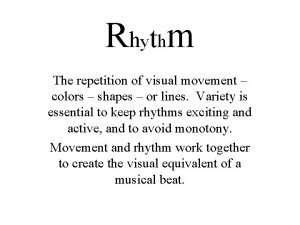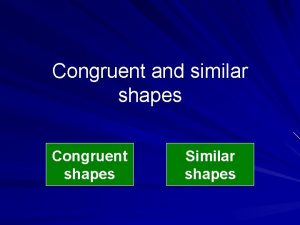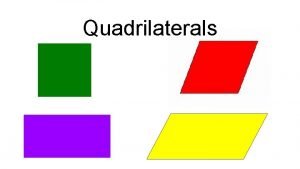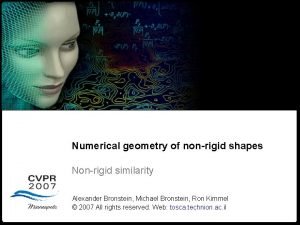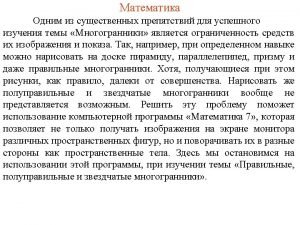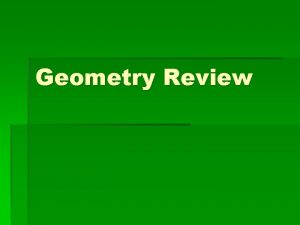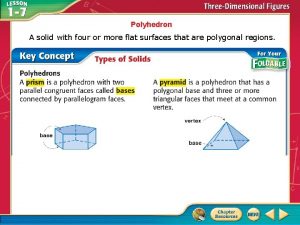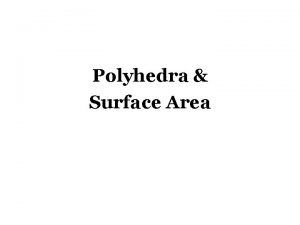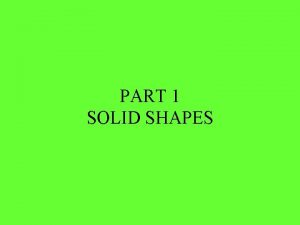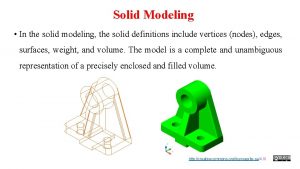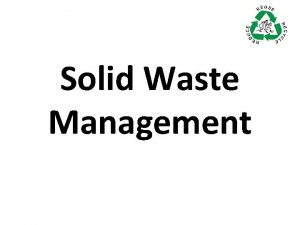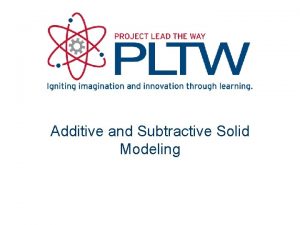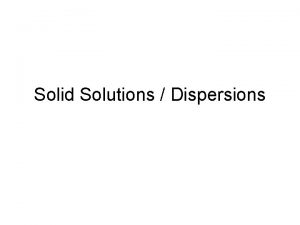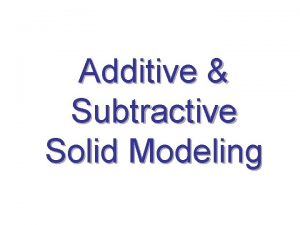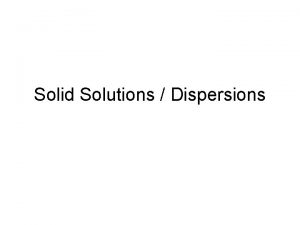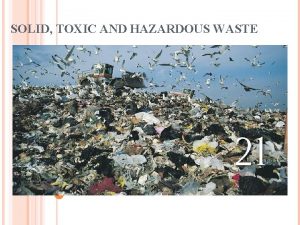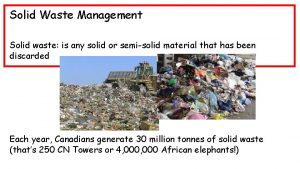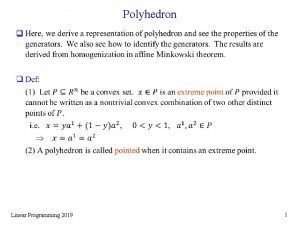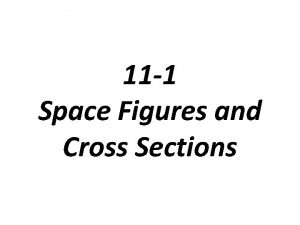z Concept 52 3 D Shapes Polyhedron Solid






















































- Slides: 54

z Concept 52 3 -D Shapes

Polyhedron Solid Convex Concave Regular Cylinder Prism Cone Pyramid Sphere

Polyhedron: a solid figure with many plane faces

Solid: a 3 -D shape that encloses space but is not made up of all polygon sides.

Convex: all vertices of the solid push outward. Concave: one or more vertices of the solid are pushed inward.

Regular: a polyhedron with all the same regular polygons.

Prism: a polyhedron made up of two parallel bases connected by rectangles. Rectangular prism Triangular Prism Pentagonal Prism

Pyramid:

Cylinder:

Cone:

Sphere:

Determine whether each solid is a polyhedron or solid. Then draw a net for each if possible. 1. 2. Pentagonal Prism Cone 3. 4. Sphere Triangular Prism

Given the net of a solid. Draw the solid and give its name. 5. 6. 7. Triangular Prism Hexagonal Pyramid Cube

z Concept 53 Parts of Solids and Cross Section

Parts of a 3 D Shape! Only cut this solid line Fold on all dotted lines. (fold both directions)

Face: a set of polygons that make up the other surfaces of a polyhedron. (lateral faces) Edge: a segment where two faces come together. Base: a polygon Vertex: a point where three or more edges come together. Vertex Edge Face Edge Vertex Base: Edge Face Vertex Triangular Pyramid Edge Vertex

Then identify the solid. If it is a polyhedron, name the faces, edges, and vertices. 9. 10. Faces: Circle S (B) Edges: none Vertices: Point R Faces: Pentagons: PWXYX and QRSUV, Quadrilaterals: QVXW, UVXY, USZY, PRSZ, PRXW Edges: Vertices: Points: P, W, X, Y, Z, Q, R, S, U, V

Then identify the solid. If it is a polyhedron, name the faces, edges, and vertices. 11. Faces: Triangles: ABC and DEF, Quadrilaterals: ABED, BCFE, ACFD Edges: Vertices: Points: A, B, C, D, E, F

a surface or shape that is or Cross Section: would be exposed by making a straight cut through something, especially at right angles to an axis. Sketch the cross section from a vertical slice of each figure. 3. 1. 2.

Describe each cross section. 4. 5. 6. Square Rectangle Triangle 8. 7. Oval Rectangle


z Concept 54 Euler’s Theorem

There are 11 polyhedrons located around the room at each group of desks. Use each one to fill in a row of the table. If the shape has a name you know write it in the first column, otherwise just write what it is made up of. Ex. (2 triangles and 3 rectangles)

Name or what shapes make it. 1 2 3 4 5 6 7 8 9 10 11 12 # of Faces # of Vertices # of Edges

Euler’s Theorem F+V=E+2

Examples: 1) 8 faces and 18 edges 2) 21 edges and 14 vertices

3) 12 pentagon faces 4) 8 triangle faces 5) 1 hexagon and 6 triangle faces

6) 20 triangle faces 7) 12 pentagon and 20 hexagon faces

2 hexagons and 6 rectangles

VOLUME OF PRISMS Concept 55

Rectangular Prism Triangular Prism Trapezoidal Prism Other Prisms

Rectangular Prisms

Triangular Prism

Trapezoidal Prism

Other Prisms

Find the volume of the right prism.

Find the missing side length given the Volume, V of each solid. 4. V = 480 cm 2 5. V = 120 in 2 6. V = 180 cm 2 480 = 96 x 120 = 10 x 180 =10(x +12) 5 cm = x 12 in = x 18 = x + 12 6 cm = x

VOLUME OF PYRAMIDS Concept 56

Volume of Pyramids Square Pyramid Triangular Pyramid Other Pyramids

Volume of Pyramids

Square Pyramids 2. 1.

Triangular Pyramids 4. 3.

Other Pyramids 5. 6.

Find the volume of each pyramid. Round to the nearest tenth if necessary.


VOLUME OF CYLINDERS, CONES, AND SPHERES Concepts 57 - 59






Find the volume of each. 1. 2. 3.

4. 5. 6.

7. hemisphere: area of great circle ≈ 4π ft 2 8. 9.
 Polyhedron shapes
Polyhedron shapes Polyhedron shape
Polyhedron shape Determine whether the solid is a polyhedron
Determine whether the solid is a polyhedron Determine whether the solid is a polyhedron
Determine whether the solid is a polyhedron Geometric shapes and organic shapes
Geometric shapes and organic shapes What's a shape with 6 sides
What's a shape with 6 sides Solid shape
Solid shape Solid figures example
Solid figures example Solid shapes names
Solid shapes names Solid shapes
Solid shapes Covalent network solid vs molecular solid
Covalent network solid vs molecular solid When a solid completely penetrates another solid
When a solid completely penetrates another solid Crystallography types
Crystallography types When a solid completely penetrates another solid
When a solid completely penetrates another solid Crystalline or amorphous
Crystalline or amorphous Crystalline solid and amorphous solid
Crystalline solid and amorphous solid Crystalline solids
Crystalline solids Evaporating mixtures
Evaporating mixtures Example of solid solution
Example of solid solution Anisotropic meaning in chemistry
Anisotropic meaning in chemistry 6 square faces 8 vertices 12 edges
6 square faces 8 vertices 12 edges Polyhedron examples
Polyhedron examples Non polyhedron
Non polyhedron Surface area of polyhedron
Surface area of polyhedron Congruent regular polygons
Congruent regular polygons Right regular solids
Right regular solids Trapezoid polyhedron
Trapezoid polyhedron Is a cylinder a polyhedron
Is a cylinder a polyhedron Polihedral
Polihedral Polyhedron project
Polyhedron project Polyhedron earth
Polyhedron earth Classifying 3d figures
Classifying 3d figures Solid liquid gas concept map
Solid liquid gas concept map States of matter concept map
States of matter concept map What is real self and ideal self
What is real self and ideal self Perbedaan selling concept dan marketing concept
Perbedaan selling concept dan marketing concept Andy warhol complementary colors
Andy warhol complementary colors Disposable implements definition milady
Disposable implements definition milady Which shapes have line symmetry
Which shapes have line symmetry Placenta shapes
Placenta shapes Lewis structure shape chart
Lewis structure shape chart Cg of half circle
Cg of half circle Ordinary shapes
Ordinary shapes Molecular shape
Molecular shape The circular chart used to remember color relationships
The circular chart used to remember color relationships Calculate the answer
Calculate the answer What shapes your identity
What shapes your identity Progressive rhythm in architecture
Progressive rhythm in architecture Shapez.io efficient designs
Shapez.io efficient designs Differentiate similar polygons from congruent polygons
Differentiate similar polygons from congruent polygons Meet the shapes
Meet the shapes Ab3e2 shape
Ab3e2 shape Shapes islamic
Shapes islamic Visio parallelogram
Visio parallelogram Non rigid
Non rigid
